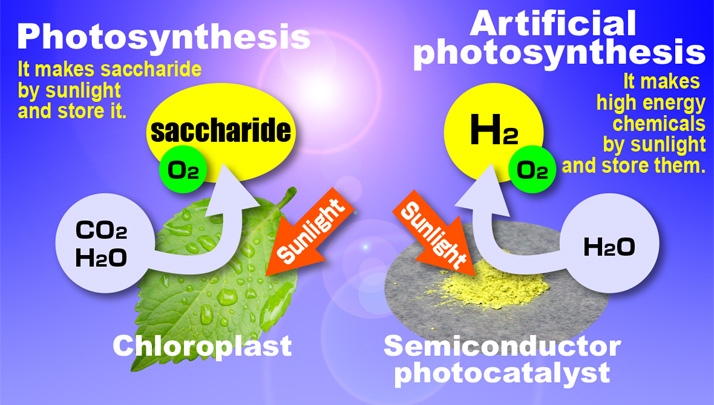Artificial Photosynthesis: Energy Produced by Solar Light

Artificial photosynthesis is attracting much attention amid various efforts to develop renewable energies. One of the problems of solar power is the difficulty of storing electricity. In contrast, artificial photosynthesis can produce hydrogen, which is a form of stored energy, from solar light and water. The development of high-performance materials and clarification of the reaction mechanism will accelerate the commercialization of this ideal technology.
Artificial photosynthesis is a generic term for technologies that imitate photosynthesis, which is the process by which plants convert light to chemical energy. Here, the term means simple techniques of producing hydrogen from inexhaustible solar light and water by the mechanism based on photosynthesis using photocatalysts and photoelectrodes composed of semiconductor particles such as oxides.
Currently we are investigating various materials to find efficient semiconductors. Although the early materials we studied only responded with ultraviolet light, the latest materials can cause water decomposition with visible light, and show the world's highest solar energy conversion efficiency on photocatalysis. We also found that our unique photoelectrode composed of layers of oxide films can generate hydrogen and oxygen in a highly concentrated carbonate solution, which greatly increases the conversion efficiency. In fact, the solar energy conversion efficiency of either technique is already on a par with the efficiency of plants, so artificial photosynthesis is no longer a dream but is becoming a reachable target.